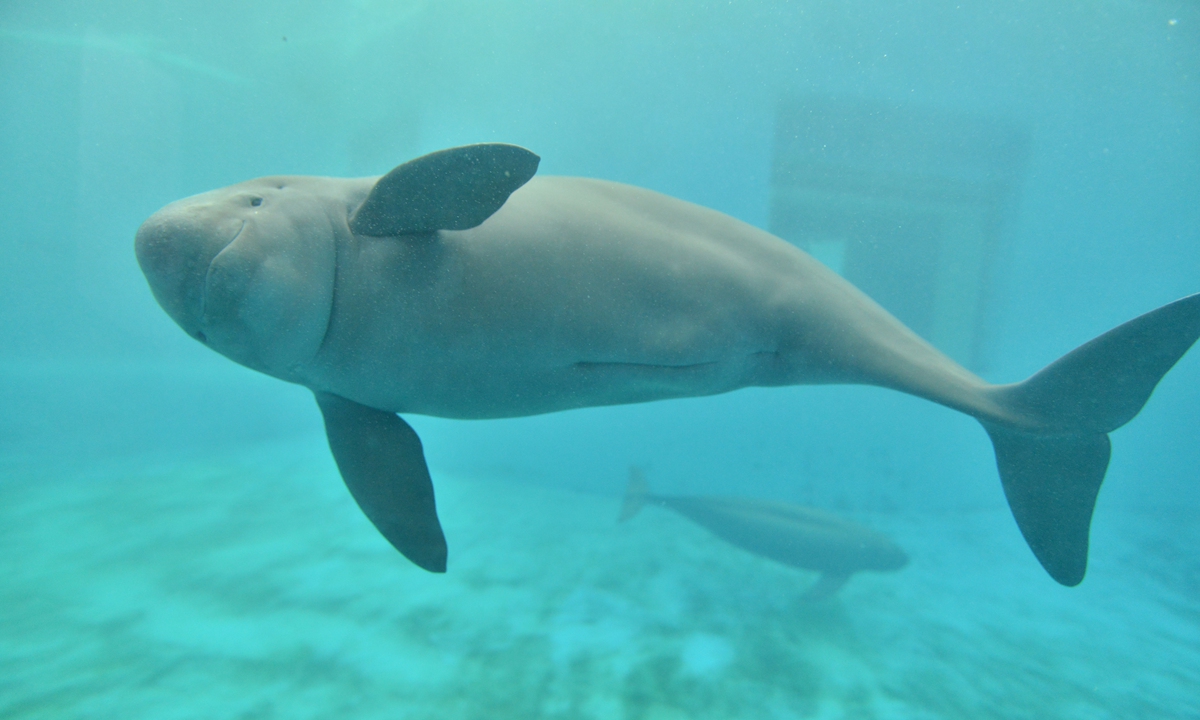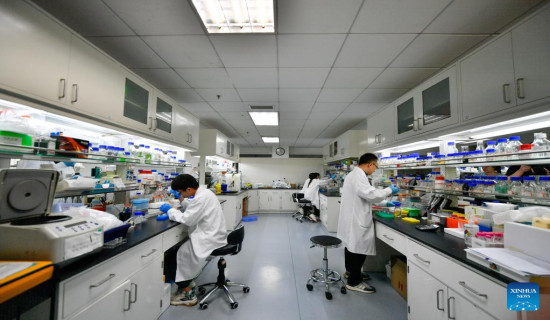- Thursday, 20 November 2025
China's underwater tech guards porpoises worldwide
WUHAN, May 27: In the golden light of early morning, a research vessel glided across China's Yangtze River, while a mysterious device trailed behind it, converting underwater sound waves into streams of data, with these efforts aimed at protecting one of the river's rarest inhabitants, namely the Yangtze finless porpoise.
Known as the "giant panda of the water," the Yangtze finless porpoise is under top-level state protection in China and serves as a barometer of the river's ecological health. For years, scientists struggled with one key challenge -- tracking these elusive creatures in the murky waters of the Yangtze.
After years of effort, scientists from the Institute of Hydrobiology (IHB) of the Chinese Academy of Sciences managed to develop passive acoustic monitoring devices capable of capturing real-time underwater signals. These devices automatically identify the porpoises' unique vocalisations, pinpoint their locations and track their movements.
Wang Ding, a researcher at the institute, explained that during the day, the equipment is towed by research vessels for mobile surveys. At night, when the vessels dock, the devices are deployed underwater to continuously record ambient noise and the high-frequency pulse signals of finless porpoises.
Additionally, a cylindrical version of the device is fixed to piers along the river. These instruments can operate continuously for up to 120 days, with technicians dispatched every three months to maintain the equipment.
This system operates independently of weather conditions or operator expertise, allowing for round-the-clock monitoring and real-time identification.
"We've achieved seamless data recording, transmission and analysis -- crucially, our acoustic recognition algorithm automates the entire process, fundamentally transforming our protection capabilities," Wang noted.
TRACK & PROTECT
The breakthrough came when researchers discovered that porpoises rely on high-frequency echolocation, emitting sounds between 20 and 160 kHz. The team engineered hydrophones capable of capturing these signals, filtering out ambient noise, and analysing pulse intervals and frequency modulations.
"Each sound source represents one porpoise -- allowing us to estimate population numbers," Wang said.
"Using the array of hydrophones, we can determine not only how many porpoises are in a given area, but also where they gather, when they feed and how they move, enabling precise habitat management," he added.
Notably, this technology does more than track porpoises. It also monitors threats to these rare animals. Ship propellers, for example, generate underwater noise that can disrupt porpoise communication, particularly between mothers and babies during breeding seasons. By analysing noise levels in real time, authorities can implement targeted measures, such as speed restrictions, to minimise harm and reduce risks.
In 2022, this system played a pivotal role in a survey which revealed that the Yangtze finless porpoise population had rebounded to 1,249 individuals -- the first recorded increase in decades.
NEXT FRONTIER
Now, scientists are integrating artificial intelligence, the Internet of Things and big data with this passive acoustic monitoring system to create a smarter, more comprehensive monitoring network.
"The next upgrade focuses on predictive capabilities, precision sensing and intelligent decision-making," said Mei Zhigang, another researcher at the IHB.
Future versions of the system may distinguish porpoises by sex and age, classify ship types by their acoustic signatures, and even predict high-risk zones for collisions or noise pollution, Mei revealed.
In addition, drones and mobile sensor arrays will soon join the protection effort, forming a multi-layered surveillance system spanning sky, surface and depths, he added.
GLOBAL CONSERVATION MODEL
According to Wang, their devices combine to form the world's largest real-time passive acoustic monitoring system specifically designed for small cetaceans.
China's acoustic technology is also crossing borders. In December 2023, Chinese and Cambodian scientists deployed three monitoring stations along a 140-kilometre stretch of the Mekong River to study the critically endangered Irrawaddy dolphin.
"We provide passive acoustic monitoring equipment, set the parameters according to the Irrawaddy dolphins' acoustic signals, and teach them how to set up the equipment and extract the data," said Chen Yuwei, an engineer at the IHB.
Similar projects are also set to be carried out in Bangladesh to protect Ganges River dolphins and in Pakistan to safeguard Indus River dolphins.
"China's experience is becoming a replicable international model," said Zhou Shuo, deputy secretary-general of the Wuhan Baiji Conservation Foundation. "We hope to foster global collaboration, sharing knowledge and technology to address biodiversity challenges."
Beyond acoustics, China has pioneered other conservation strategies, including ex-situ conservation, drone patrols and genetic management. These are tools that could help save small cetaceans worldwide.
As Wang put it: "Ecological conservation is a cause worth fighting for -- for all of humanity. By contributing China's wisdom, we hope to create a world richer in species."
On the Yangtze River and beyond, the seemingly silent pulses of porpoises are now being heard and answered like never before, Wang added.







-square-thumb.jpg)








